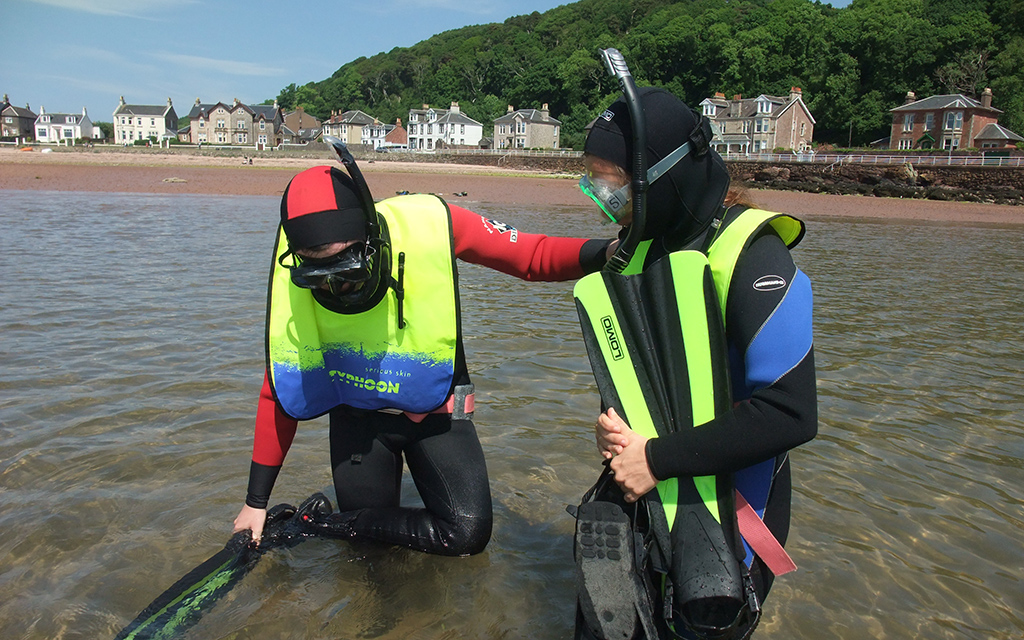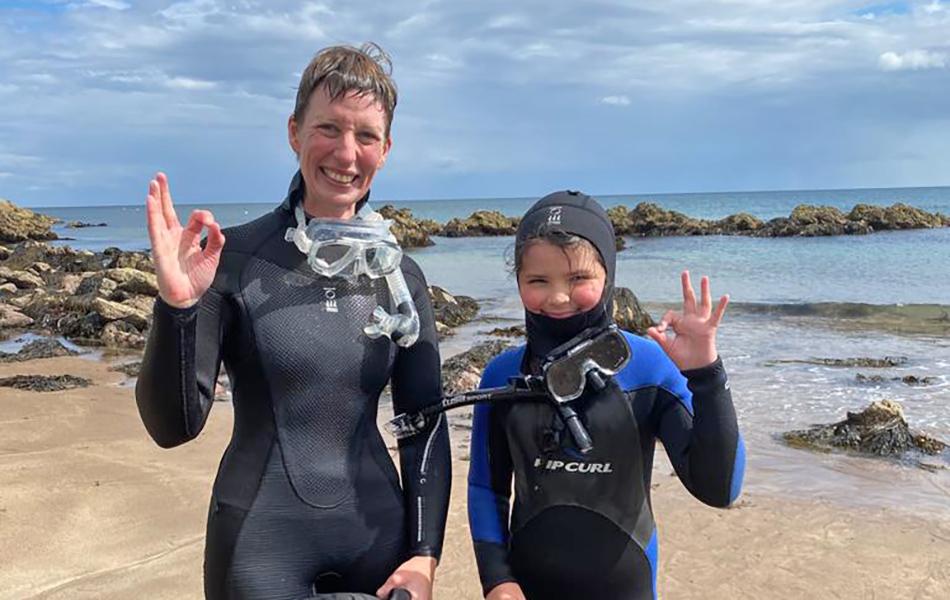
Photo credit: Marg Baldwin
Cold water carries a range of insidious dangers, but they are risks that can be mitigated by planning and preparedness, says Andy Torbet.
Once upon a time, in a galaxy far, far away (Greenland, 2012) I was invited to jump into the Arctic Ocean by Dr Chris Van Tulleken in order to investigate cold water shock. I was to complete this exercise not in the drysuit and multiple undersuits I had worn on the iceberg dives I’d carried out previously.
Instead, this dive would be in my pants. The surface of the Arctic Ocean, being salt water, can happily maintain minus one-degree Celsius. Which is exactly as pleasant as it sounds.
Cold water shock
Although cold water immersion has become popular and has many health benefits, there are some adverse effects we should be aware of. The ‘experiment’ mentioned above was to allow the good doctor to unpack the first problem you encounter. It is the involuntary gasping reflex and heightened breathing rate we experience when unfamiliar with sudden immersion in cold water. This can be dangerous, because water can easily be inhaled during this understandably panicky reaction. This immediate effect can also include rapid rises in heart rate and blood pressure and cardiac arrhythmia (your heart doesn’t beat properly). All this can be dangerous for those vulnerable to heart problems.
hypothermia... can be hard to see in a buddy if they are wearing hood and gloves
The next problem can be a loss of muscle control as the cold water, so much better at sapping heat than cold air, draws heat from the tissues. I have experienced this while swimming in a cave. The loss of coordination in my arms and legs came on alarmingly rapidly. As it happened, I had just reached the end of the pool and had an opportunity to plant my feet on solid rock just as these symptoms took hold. Had they arrived a few minutes earlier, I may well have been unable to keep my head above the water. You see, physical fitness is immaterial when your muscles stop working.
Dangers of hypothermia
The final issue to watch out for is the last to arrive – hypothermia. As British divers, we are not unfamiliar with being cold and many of us have probably spent some time in the initial stages of hypothermia. Signs can include shivering, loss of coordination, slurring of speech and drowsiness. Other signs include cyanosis, a change in colour to blue of the fingers and eyelids. But these can be hard to see in a buddy if they are wearing hood and gloves. It can also be seen on the lips, which might be more obvious around your buddy’s snorkel.
‘So, shall I only dive in warm water?” you ask. Of course not. I have extolled the virtues of cold water and winter snorkelling many times in this column. We simply need to be aware of the potential problems and do what we can to avoid them. There are three broad things to consider – thermal protection (your suit), time in water and your plan when you exit. In Greenland, when diving under icebergs in the ridiculously cold water mentioned above, we wore double undersuits, drysuits and kept our dive time to 45 minutes or less. In Alaska I had to freedive under the ice of a frozen lake (I know this is a snorkelling page, but the experience is instructive). Although only in a 5mm wetsuit I spent less than 5 minutes in the water getting ready and doing the actual dive.
Time spent in the water and the thermal properties of dive-suits can both positively affect how cold you get. From experience, I know a well-fitting 5mm wetsuit trumps a baggy 7mm. Also, consider the topside conditions. If you exit the water near-hypothermic into freezing winds, it will not improve your situation. In Alaska, where the air was minus 28 Celsius, the safety team had set up a tent at the finish hole heated to 30+ Celsius.
It’s always better to be informed than ignorant and I share my own experiences in the hope they will help keep people safe. However, this should not to discourage you from therapeutic cold water immersion, cold water swimming nor, especially, carrying on snorkelling through the chillier months. Sensible precautions, as in the diving form of diving, make the difference between staying safe and putting your wellbeing at risk.
Article by Andy Torbet first published in SCUBA magazine, Issue 142 Jan/Feb 2024. Images in this online version have been substituted from the original images in SCUBA magazine due to usage rights.
I want to become a snorkeller!
For more information on snorkelling with BSAC go to bsac.com/snorkelling. Looking to introduce snorkelling into your club? Find out more at bsac.com/snorkellinginstructor




